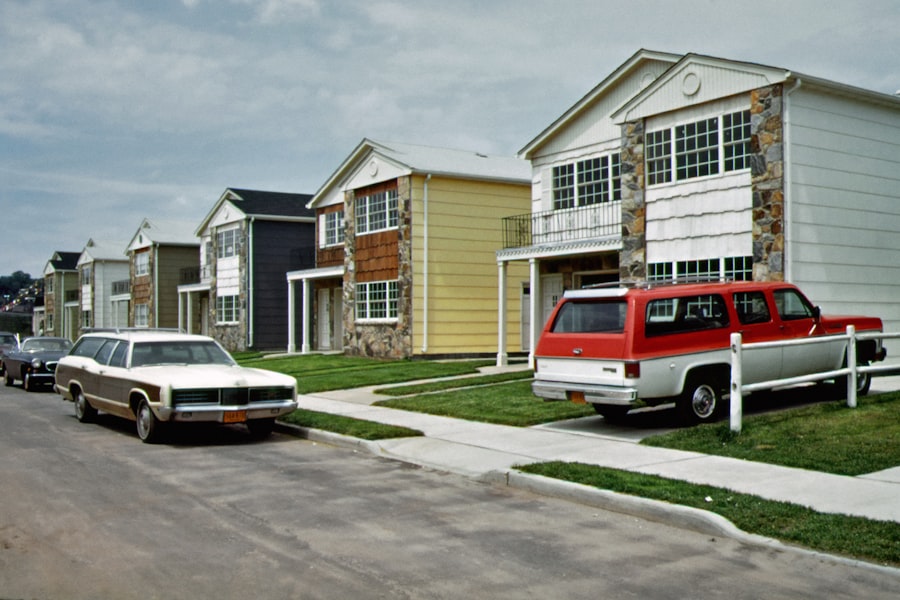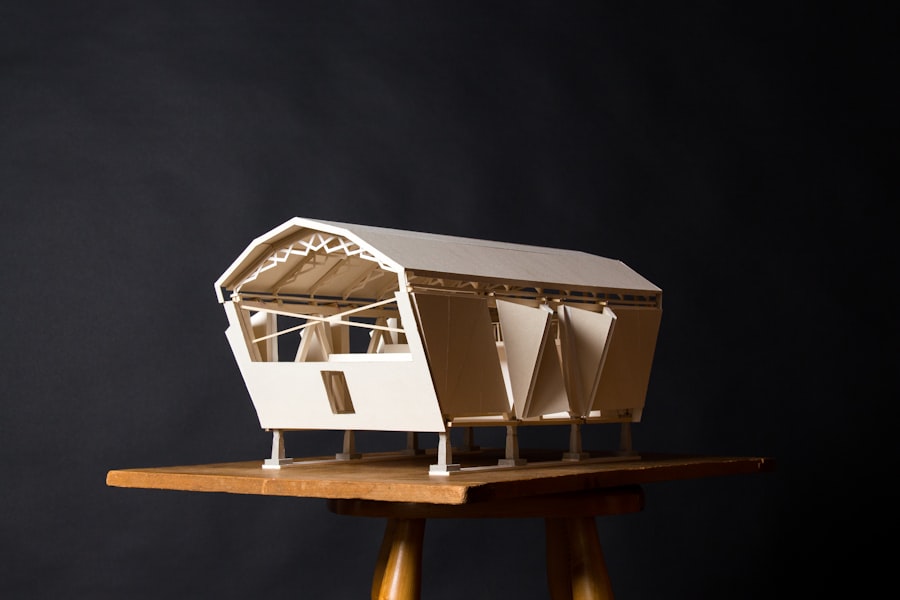In recent years, the concept of portable homes has gained significant traction, driven by a combination of economic factors, environmental concerns, and a shift in lifestyle preferences. The traditional notion of homeownership is evolving, with many individuals and families seeking more flexible living arrangements that align with their values and financial situations. Portable homes, often referred to as tiny homes or mobile homes, offer a unique solution to the challenges posed by rising housing costs and urbanization.
As cities become increasingly congested and property prices soar, the appeal of a home that can be relocated to different locations becomes more pronounced. The rise of portable homes can also be attributed to the growing awareness of minimalism and sustainable living. Many people are now prioritizing experiences over material possessions, leading them to downsize their living spaces.
Portable homes often embody this ethos, providing a smaller footprint that encourages a simpler lifestyle. Additionally, advancements in construction technology and design have made it possible to create portable homes that are not only functional but also aesthetically pleasing. This shift has led to a burgeoning market for portable homes, with various designs and models catering to diverse tastes and needs.
Key Takeaways
- Portable homes are becoming increasingly popular as flexible and affordable housing solutions.
- They offer benefits such as mobility, cost-effectiveness, and reduced environmental impact.
- Various types of portable homes are available, including tiny houses, modular homes, and mobile homes.
- Key considerations when buying include size, durability, location, and financing options.
- Despite challenges like zoning restrictions and limited space, portable homes are poised to play a significant role in affordable housing.
Benefits of Portable Homes
One of the most significant benefits of portable homes is their affordability. With the cost of traditional housing skyrocketing in many regions, portable homes present a viable alternative for those looking to enter the housing market without incurring crippling debt. The lower price point often associated with portable homes allows buyers to invest in their living space without sacrificing their financial stability.
Furthermore, many portable homes are designed to be energy-efficient, which can lead to substantial savings on utility bills over time. Another advantage is the flexibility that portable homes offer. Homeowners can choose to relocate their homes as their circumstances change, whether due to job opportunities, family needs, or personal preferences.
This mobility is particularly appealing to those who enjoy traveling or wish to explore different communities without the commitment of a permanent residence. Additionally, portable homes can often be placed in various settings, from urban backyards to rural landscapes, allowing for a diverse range of living environments that cater to individual lifestyles.
Types of Portable Homes Available for Sale

The market for portable homes is diverse, encompassing a wide range of styles and designs to suit different preferences and budgets. One popular option is the tiny home, typically ranging from 100 to 400 square feet. These compact dwellings maximize space through innovative design solutions, such as multi-functional furniture and efficient storage systems.
Tiny homes can be built on trailers for mobility or on foundations for a more permanent setup. Another category includes modular homes, which are constructed in sections at a factory and then transported to the desired location for assembly. Modular homes can be customized in terms of size and layout, offering buyers the opportunity to create a space that meets their specific needs.
Additionally, there are park model RVs, which are designed for recreational use but can also serve as permanent residences. These units often feature full kitchens and bathrooms while maintaining a compact footprint.
Factors to Consider When Buying a Portable Home
| Factor | Description | Importance Level | Considerations |
|---|---|---|---|
| Size and Layout | Determines the livable space and comfort | High | Number of rooms, storage space, open vs. closed layout |
| Weight and Mobility | Affects ease of transport and relocation | Medium | Trailer weight, towing vehicle requirements, road regulations |
| Durability and Materials | Impacts longevity and maintenance needs | High | Frame material, insulation quality, weather resistance |
| Utilities and Amenities | Availability of essential services and comfort features | High | Plumbing, electricity, heating/cooling, kitchen appliances |
| Cost | Initial purchase and ongoing expenses | High | Purchase price, insurance, maintenance, utility costs |
| Legal and Zoning Regulations | Compliance with local laws and placement restrictions | Medium | Permits, zoning laws, HOA rules, parking restrictions |
| Customization Options | Ability to personalize the home to your needs | Low | Interior finishes, furniture, technology integration |
| Resale Value | Potential for future sale and investment return | Medium | Brand reputation, condition, market demand |
When considering the purchase of a portable home, several factors should be taken into account to ensure that the investment aligns with one’s lifestyle and financial goals. First and foremost is the location where the home will be placed. Zoning regulations and land use laws vary significantly by region, so it is crucial to research local ordinances that may affect where a portable home can be situated.
Some areas may have restrictions on mobile or tiny homes, while others may offer incentives for sustainable housing options. Another important consideration is the quality of construction and materials used in the home. Buyers should look for reputable manufacturers who adhere to industry standards and prioritize durability and safety in their designs.
It is also advisable to inspect the home thoroughly before purchase, checking for any signs of wear or potential issues that could arise in the future. Additionally, prospective homeowners should evaluate their long-term plans; whether they intend to live in the portable home full-time or use it as a vacation retreat can influence the type of home they choose.
Financing Options for Portable Homes
Financing a portable home can differ significantly from traditional home loans due to their unique nature. Many banks and lending institutions may not offer conventional mortgages for portable homes, particularly if they are classified as personal property rather than real estate. However, there are several financing options available for those looking to purchase a portable home.
One common route is obtaining a personal loan or a specialized loan designed for tiny homes or manufactured housing. These loans typically have shorter terms and higher interest rates compared to traditional mortgages but can provide the necessary funds for purchasing a portable home. Additionally, some credit unions and community banks may offer financing tailored specifically for portable or modular homes, making it worthwhile for buyers to shop around for the best rates and terms.
Another option is to consider alternative financing methods such as crowdfunding or peer-to-peer lending platforms. These avenues allow individuals to raise funds from friends, family, or even strangers who believe in their vision of sustainable living. Furthermore, some buyers may choose to pay cash for their portable home if they have sufficient savings, which can simplify the purchasing process and eliminate interest payments altogether.
Tips for Finding the Right Portable Home for You

Finding the right portable home requires careful consideration and research to ensure that it meets your needs and lifestyle preferences. Start by defining your priorities: how much space do you need? What amenities are essential? Understanding your requirements will help narrow down your options significantly. For instance, if you plan on living in the home full-time, you may want more square footage and additional features like a full kitchen and bathroom. Visiting model homes or attending tiny home expos can provide valuable insights into different designs and layouts available on the market. Engaging with current owners of portable homes can also offer firsthand experiences that inform your decision-making process. Online forums and social media groups dedicated to tiny living can serve as excellent resources for advice and recommendations. Additionally, consider your long-term plans when selecting a portable home. If you anticipate changes in your lifestyle—such as starting a family or transitioning into retirement—choose a design that can adapt to those changes. Some manufacturers offer customizable options that allow you to modify your home as your needs evolve over time.
Potential Challenges of Living in a Portable Home
While portable homes offer numerous benefits, they also come with their own set of challenges that potential homeowners should be aware of before making a commitment. One significant challenge is the limited space available in these homes. Downsizing from a traditional house can be difficult for many individuals and families accustomed to larger living areas filled with possessions.
Adapting to a smaller footprint requires careful planning and organization skills to maximize functionality without feeling cramped. Another challenge is the potential lack of amenities typically found in conventional homes. Depending on the design and size of the portable home, certain features such as laundry facilities or extensive storage may be limited or absent altogether.
This limitation necessitates creative solutions for everyday living, which may not suit everyone’s lifestyle preferences. Moreover, living in a portable home often means being part of a community that may have different norms and expectations compared to traditional neighborhoods. This communal aspect can foster camaraderie but may also lead to conflicts regarding shared spaces or differing lifestyles among residents.
The Future of Portable Homes in the Affordable Housing Market
As housing affordability continues to be a pressing issue across many urban areas worldwide, portable homes are poised to play an increasingly vital role in addressing this crisis. Their lower cost compared to traditional housing options makes them an attractive solution for individuals seeking affordable living arrangements without compromising on quality or comfort. Moreover, as cities grapple with issues related to sustainability and environmental impact, portable homes align well with eco-friendly initiatives aimed at reducing carbon footprints.
Many manufacturers are now focusing on building energy-efficient models that utilize sustainable materials and technologies, further enhancing their appeal in an environmentally conscious market. The future landscape of affordable housing may very well include an integration of portable homes into urban planning strategies. Local governments could implement policies that encourage the development of tiny home communities or designate specific areas where portable homes can be placed legally.
As societal attitudes toward housing evolve and more people embrace alternative living arrangements, the potential for portable homes as a mainstream housing solution becomes increasingly viable. In conclusion, while challenges exist within this sector, the benefits offered by portable homes make them an appealing option for many individuals seeking affordable housing solutions in an ever-changing world.



